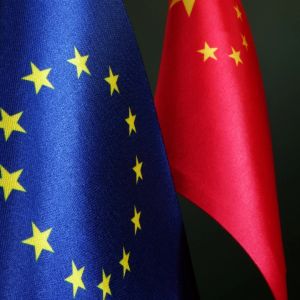China has quietly ramped up its imports of Iranian oil, using shadowy shipping tactics and independent “teapot” refineries to work around aggressive U.S. sanctions, according to data provided by CNBC. Despite the sanctions aimed at cutting off Tehran’s cash pipeline, oil has kept flowing. China nearly doubled its Iranian crude intake to 17.8 million barrels per day in 2024 compared to 2022, based on figures from ship-tracking firm Kpler. The first five months of this year alone saw consistent inflows of 6.8 million barrels per day, unchanged from the same stretch in 2024. Since July 2022, China’s customs data has shown zero crude arriving from Iran. That’s fake. The oil’s still coming, just under the radar. Most of it doesn’t even look like it came from Iran anymore by the time it reaches shore. Instead, tankers shuffle it across oceans, switch vessels mid-route, hide their location signals, and wipe the paper trail clean. Teapots handle crude, state firms stay out The buyers? Not the big boys. China’s small independent refiners—nicknamed teapots—are leading this game. State-owned and large private refiners still avoid sanctioned Iranian crude, but teapots are scooping it up. They buy it “delivered,” meaning the Iranian sellers handle all transport. That way, the Chinese refiners don’t get tangled up in maritime sanctions. “The physical market has not seen any long-term impact to the flow of Iranian oil,” said Brian Leisen, global energy strategist at RBC Capital Markets. These teapots don’t even need to ask where the oil comes from. By the time it reaches China , the barrels have been passed from ship to ship—often near the Strait of Malacca or the Middle East Gulf—and the original documents are switched. “If the cargo gets transported from ship to ship, it is not easy to trace once documents are switched,” said Punit Oza, president of the Institute of Chartered Shipbrokers. That’s why China’s stats show nothing—because technically, it didn’t come from Iran. But they’re not just hiding the papers. Tankers are also spoofing their location data. They broadcast fake GPS signals, pretending to be in one spot when they’re actually moving crude elsewhere. That way, it’s harder to connect a specific cargo with its true origin. “I’ve seen a lot of tankers spoofing their location off Malaysia recently,” said Bridget Diakun, senior risk and compliance analyst at Lloyd’s List Intelligence. She described that area, east of Peninsula Malaysia, as a “hot spot for Iranian oil.” China pays in yuan, dodges dollar-based systems Then there’s the payment game. Buyers in China are using renminbi—not U.S. dollars—to pay for the oil. These transactions flow through small banks that are already on the U.S. sanctions list , keeping China’s major banks clean. No dollar means no involvement in SWIFT, the dollar-dominated global payments network. That’s the point. “Because there is no dollar exposure, being excluded from the SWIFT payments systems does not pose a large impediment for oil flows to continue,” Brian added. The oil is undercutting everyone. In 2023, Iranian Light crude sold for $6 to $7 less than the UAE’s Upper Zakum grade, which has the same quality but no sanctions. At about $64 per barrel, the discount is enough to draw in teapots that don’t care where the oil’s been, as long as it’s cheap. “Iranian Light was traded at about $6 to $7 cheaper,” said Muyu Xu, senior oil analyst at Kpler. Despite all the pressure from Washington, the cash is still rolling into Tehran. Iran earned around $70 billion from petroleum and petrochemical exports in 2023, based on numbers from the U.S. Congress. And most of that went through China. The U.S. Energy Information Administration said in May that around 90% of Iran’s oil exports still end up in China. Now, even with U.S. President Donald Trump back in the White House, the tone has shifted. Earlier this week, he posted on Truth Social that China could keep buying Iranian oil. That shook the oil markets, sending U.S. crude prices down 6%. Later, a White House official told CNBC that Trump’s comment doesn’t mean sanctions are being lifted. Still, Xu saw that statement as a “calculated trade-off.” She said it could be an attempt to get Iran to respect the ceasefire and restart nuclear talks, while also offering “goodwill” to China ahead of more trade negotiations. “It is now too early to say whether this points to a potential waiver on Iranian sanctions,” she added. But no one’s waiting. Not the oil traders. Not the teapots. Not even Iran. “While there is still no clear conclusion for Iran despite ceasefire, for the physical oil market, we expect oil exports to continue as usual,” Brian said. Speaking at a NATO summit, Trump also said Iran will “need money to put that country back into shape.” That has people wondering whether his “maximum pressure” campaign is slowly getting shelved—even if the sanctions still stand on paper. Cryptopolitan Academy: Coming Soon - A New Way to Earn Passive Income with DeFi in 2025. Learn More



















